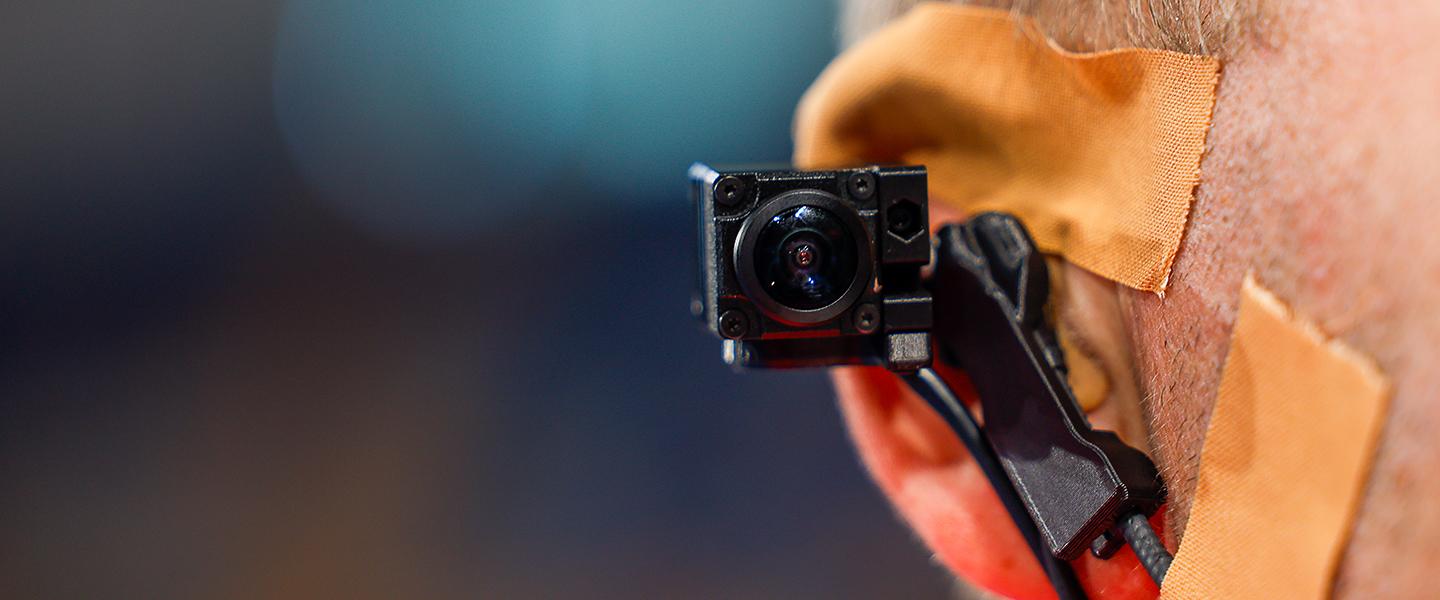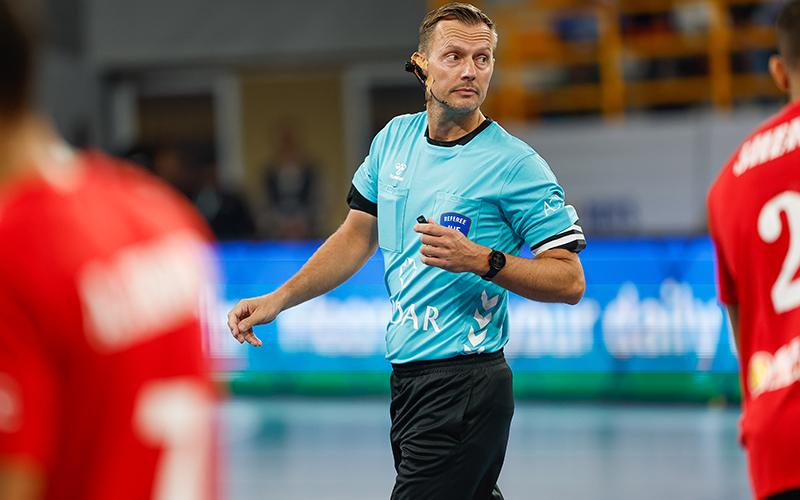A referee's point of view: IHF marks historic milestone with successful RefCam introduction
29 Sep. 2025

The International Handball Federation (IHF) has taken another step forward in technology by introducing a referee camera at a major international event for the first time. This innovation made its debut on the opening day of the 2025 IHF Men’s Club World Championship, with all three matches scheduled seeing this technology used. Provided by industry specialist Riedel, the new "RefCam" is helping to bring a fresh perspective to global handball and represents a noteworthy addition to how the sport is presented and experienced.
By partnering with German company Riedel, which has pioneered the successful use of referee cameras in other major sports, such as football, during the 2025 FIFA Club World Cup, the IHF affirms its commitment to adopting modern technology for the benefit of all stakeholders.
“It makes it much easier to see where the referees are actually seeing on the court, and where they are positioned. We can better understand why they are taking, or not taking, that decision, because the referees in many cases have more situations they need to handle on the court in the same action. Having focus on the most important one and identifying what is happening and predicting what is going to happen and seeing how they are working with their positioning and focus point is very important assets in the modern game of handball,” says Per Morten Sødal, the Chairman of the Playing Rules and Referee Commission (PRC) of the IHF.
The new RefCam was used during the first day of the 2025 IHF Men’s Club World Championship in the three matches scheduled, with three referee pairs – Norway’s Lars Jørum and Håvard Kleven, Slovenia’s Bojan Lah and David Sok and Germany’s Robert Schulze and Tobias Tönnies testing it.
Weighing only 14 grams, therefore not impacting the movements or the experience of the referees during the matches, the RefCam developed by Riedel represents a groundbreaking advancement in sports officiating technology, offering a head-mounted, ultra-light camera designed specifically for referees. The RefCam system consists of a miniature POV camera unit, seamlessly integrated onto a referee’s headset and paired with a compact transmitting or recording unit.
It is ergonomically designed and can be secured with customizable mounting options. RefCam supports high-definition video output - up to 1080p at 50 Hz - and electronic image stabilization for smooth, broadcast-quality footage. The live streaming version connects via cutting-edge private 5G networks, allowing for instant, real-time video transmission, while the recording version stores footage locally for training and review.
“Two referees – Patrick Kessel and Nicolas Winter – created this camera. They had the idea of the product and both are football referees in the Bundesliga, the first German league. The main purpose of the product and the idea behind it was to improve referee training. So it's a tool from referees, for referees, to enable them to get into the perspective of a referee and by this have the view and angle which is causing the decision of the referee to better understand why are they taking the decision and how can they improve their decision making,” says Luca Marx, the Riedel representative on site at the 2025 IHF Men’s Club World Championship.

The RefCam also includes an integrated microphone (which can be enabled or disabled), offering the option to capture the sound environment alongside visuals. Therefore, the communication between referees during each match can also be analysed and improved.
“It's the first time we actually can see what the referees are seeing. Of course, it's not 100% here either. Yes, it's the same angle as the head of the referees, which is more accurate than if you have that on the body. But of course, the referees can also move their eyes in a different angle than the camera but we are much more closer to what they are actually seeing now. Both the referees and us who are working with them also were having a little bit of a wow moment when they saw this,” adds Sødal.
As technology improves, so does the speed of handball, with referees now having to take more than several hundred throughout each match. Therefore, having this unique perspective will definitely change the educational part of the refereeing, offering a brand new avenue for helping younger referees understand the game better.
For the first time, handball referees and educators gain access to a unique, stabilized point-of-view (POV) perspective, allowing in-depth analysis of decision-making, positioning, and live match dynamics. This immersive tool will be used to enhance referee training, develop deeper understanding of on-court interactions, and foster a new level of transparency within the officiating community.
“Actually, I think handball is even a better use case because you do not have circumstances which could be negative for the technology. No rain, no fog or bad weather. You have the referees who have much more stable conversations with the players, for example. The court is smaller. There's not so much space as compared to other sports. So I think it's one of the best use cases and I'm really fascinated about the results that we have seen today,” says Marx.
Moreover, the dual-pronged use of the camera can also reflect in the fans’ experience of handball, with them now being able to see exactly what happens on the court through the referees’ perspective, as the RefCam allows integration with the TV broadcasting of the matches.
Therefore, the ones in the arena can actually see on the big cubes what the referees see on the court, while the ones watching the matches from home will be able to get an immerssive on-court experience via the RefCam.
The viewers can therefore be treated to an unprecedented view from the referee’s perspective, seeing the game as the officials do - up close and in real time. This innovation delivers fresh, engaging content to broadcasts and social media, showcasing moments and challenges that traditional camera angles have always missed. The result is a far richer fan experience and a deeper appreciation for the complexities of officiating at the highest level.

“We are continuously striving to develop the product. So the camera technology, also the earpieces to have a nice view, a stable view, high quality videos that are usable. And we are very happy that we are getting great and positive feedback. For example from Pierluigi Collina – the FIFA Chief of Referees - after the FIFA Club World Cup,” says Marx.
With the emergence of VR in handball, the team time-out button and the standard communication between referees and delegates via their microphones during the matches, the landscape of the refereeing world in handball has definitely change for the better over the last 15 years, providing a more data-driven approach.
“We will of course use technology in the future, but we need to use the technology right. Because we also need to use technology in a way that we keep the authority of the referees as big situation decision makers. Because if our top referees cannot be big situation decision makers, how can a 16-17 year old boy or girl who are whistling in their first season take a strong decision in a young age category, without any “help”?,” concludes Sødal.

